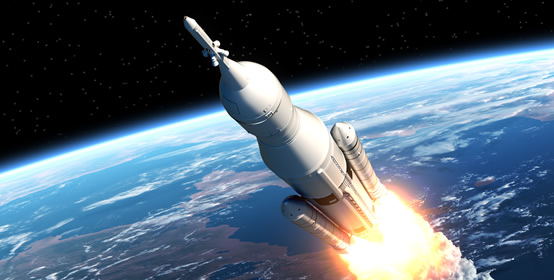
In the past year, space enthusiasts have been thrilled to see a revival in people’s interest in space travel. Since NASA’s glory days of the Apollo moon missions, the group has failed to garner enough public support or excitement to continue traveling back and forth to the moon. President Trump has recently signed a new space policy directive that will potentially put a spark back into the long-past space race.
In 1957, the Soviet Union made history when it launched the first ever satellite into space. Countries around the world marveled at the technological advancement, and governments became concerned about the new technology’s potential for surveillance or military strikes. Most importantly, the Soviet Union’s advancements had a growing number of global citizens questioning America’s status as global leaders.
In response, the United States committed itself to learning all they could about space, satellites and rockets. NASA was formed, and only a few short years later in 1969 the first man walked on the moon. Project Apollo, NASA’s program dedicated to getting man to the moon and back, was crucial for the United States. According to President John F. Kennedy, these Apollo missions would “persuade people in developing countries to choose American “freedom” over Soviet “tyranny” and in turn secure the status of U.S. global leadership”.
The successful Apollo Missions and American travel to the moon ended in 1972. After this period of time, the U.S. began cooperating with international space enthusiasts, but the federal government’s interest in space slowly waned. Funding for NASA and its goals slowly decreased over time. During the 2008 financial crisis, NASA’s budget was cut again. In fact, the federal government spent more money on the bank bailout of 2008 than it has given NASA since the group was founded.
On December 11th, President Trump signed Space Policy Directive 1 urging NASA to refocus its efforts on bringing man back to the moon and beyond. The president made it clear that our efforts to reach the moon will be more focused this time around, and the missions will ideally create a foundation for us to reach Mars.
For Fiscal Year 2018, NASA has been allocated around $19.1 billion. This is about a 4.4 percent increase in NASA’s funding set by former President Obama for the year 2017. The U.S. government has been funding this space program with revenue acquired through taxes and federal revenue, and President Trump has made it clear that NASA and other space programs should focus more on public-private partnerships to further their goals.
NASA’s administrator, Robert Lightfoot, believes that President Trump’s directive will create both a “sense of urgency” and garner public support for NASA’s space pursuits. While there are plenty of individuals, corporations and international space organizations that would be willing to help NASA, it’s been difficult to produce enough excitement to spur an increase in funding. This directive by the President may be the key to more effectively organizing space enthusiasts around the globe.
With President Trump’s support, NASA has decided to officially end their Asteroid Redirect Mission and redirect all their efforts towards returning to the moon. NASA hopes to attract the best space enthusiasts in the private industry and abroad. They hope to develop a more efficient and coordinated plan in creating the universe’s first deep space infrastructure for complex multiple planet journeys. NASA hopes to fulfill President Trump’s vision by creating a facility named the Deep Space Gateway. This facility would be a moon base station to facilitate travel between Earth and Mars.
One of the reasons that NASA has struggled to gain enough public support and enthusiasm for their endeavors is because they have since lost the technological capabilities that they held in the 1970s. While getting to Mars is exciting, most of such talk is only rhetoric right now because the technology required to make such a venture doesn’t exist yet.
In fact, NASA no longer has the capability to reach the moon. The space agency has had to spend billions of dollars to reproduce old technologies with their Orion Spacecraft program. Currently, their timeline for resuming space travel hinges on the success of their Orion efforts. The space agency has stated that Orion probably won’t be ready to carry humans into orbit until at least 2023.
Despite all of society’s incredible contributions from NASA, the group will receive less than half a percent of the federal government’s 2018 budget. The space agency has an uphill battle in developing the technologies needed to travel to the moon and beyond. Funding from the federal government, corporations, international space enthusiasts and wealthy individuals will be crucial in these endeavors, but President Trump’s directive could potentially rally enough public support to get the job done.